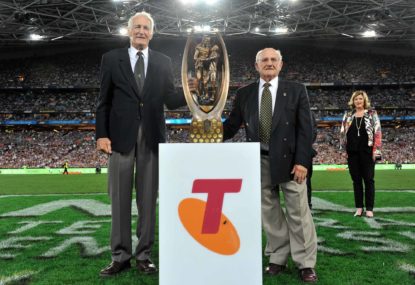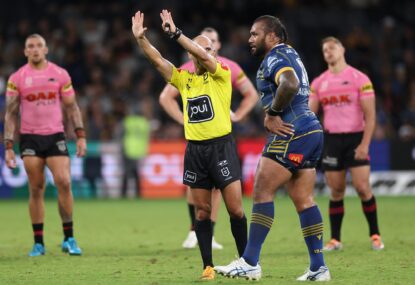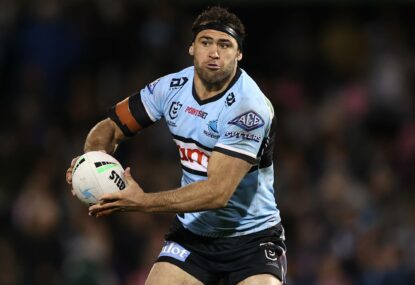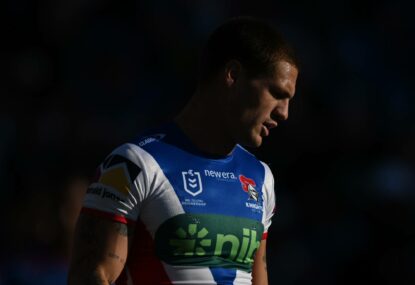This month is the first of rugby league’s 124th year.
Columns like this one, which attempt to take stock of events that stretch over more than a century upon the passing of a significant date, are fraught with danger and chief amongst these is recency bias.
The latest salary cap scandal, debate over competition structure or drugs positive can seem like Armageddon right now – and even for the next five years. But, if you draw a line from the meeting at the George Hotel on August 29, 1895, to five years after the allegedly catastrophic event, it barely raises a ripple.
Having said that, in 1895-96, every team simply played each other twice – once home and once away. What we wouldn’t give for such simplicity now!
Then there are the things that happen to just about every sport. They end up on television. They are heavily sponsored. They are subject to gambling. Crowds fluctuate. Players earn much, much more money, rules make them safer.
If we strip away these constant variables, what are we left with? Here’s a few points.
1) Rugby League left its growth spurts until very late in the day.
Early touring teams actually were far more adventurous than those of more recent times – they stopped en route and played games in the Middle East and North America and the early Kangaroos spent weeks on tour in Wales.
Many things have led to the belated forays into mainland Europe and the Pacific, but when the history of this trend is written, the World Sevens in Sydney (and briefly Brisbane) in the 1990s should receive a dominant mention.
The changes happening at the moment are significant in terms of the sport’s entire history – Tonga and Fiji beating New Zealand, these are unprecedented results.
2) The sport has found it impossible to expand top-tier club competitions into areas where it has little cultural history.
The Melbourne Storm are the only example with longevity in almost a century and a quarter, with Toronto Wolfpack two seasons into their attempt to emulate and – due to the small matter of the Atlantic Ocean – exceed that feat.
3) Certain clubs have been better at taking advantage of political, social, economic and purely co-incidental opportunities than others.
Hull FC are the only team of the 1895-96 top eight currently in Super League, although five of them survive until this day across all levels. In Australia, just two sides remain from the 1908 season, two have merged, two could be argued to exist as different clubs representing the same regions and three still play at a lower level.
4) The sport has blazed a trail for equality and social justice.
The first black Great Britain captain, the first Indigenous Australian captain, the statements on marriage equality at the NRL grand final, the recent rise of Physical Disability matches; this list goes on.
Rugby league officialdom can still sometimes be accused of forgetting the game’s constituents, but the game always seems to be looking out for the oppressed and disadvantaged more than many others.
5) Rugby league has frequently played with its rules.
Initially to make it more attractive and differentiate itself from rugby union, from roughly the 1960s onwards changes were made to stay ahead of cynical and exploitative coaching.
The balance generally swings between defence and attack and back again. In 1986 we hard a try-less Australian grand final.
6) The game has had enough internal issues to prevent it even seriously attempting recognition on the family of global sports.
Once again, recent developments stand out over the entire 123-year history of rugby league – recognition by sport accord, moves toward Commonwealth Games involvement for Nines, government recognition in many countries as a sport distinct from rugby union.
7) Rugby league remains tightly bound to the working class communities that begot it
Examples include Yorkshire and Lancashire, where broken time payments for working men caused the schism, Sydney communities who – like the VFL teams from Irish Catholic enclaves in Melbourne – kept playing during the first world war while those more aligned with the crown ceased.
Overseas, there was the south of France – where the sport was shut down by the Nazis and Vichy government – and the South Auckland area immortalised in Once Were Warriors.
Few in these demographics have the financial means to promote the sport widely. Instead, marketers use rugby league to sell things to them.
Making rugby league – a billboard for regionalised communities of modest means – bigger seems to have little commercial benefit.
Businesses want to grow rich audiences, not those of limited commercial potential.
However, new blood and perspectives from places such as North America seem to be changing this and as those ‘big ticket’ sports become commercialised to the point of saturation, businesses will eventually move down the food chain and get to rugby league.
8) Radio and fast printing presses helped enshrine rugby league’s popularity in its strongholds at the start of the 20th Century.
They also helped stop it challenging other sports for supremacy in other markets where it was on the rise as they, instead, were cemented by mass media in the public consciousness.
Television, then pay television, also carried the sport along in its tide with the Super League War causing another schism in Australia and prompting the switch to summer in Britain.
But the decline of television stations and rise of on-demand content has the capacity to be as impactful as these earlier revolutions – if the game is not careful its entire livelihood – TV money – will be ripped from under it.
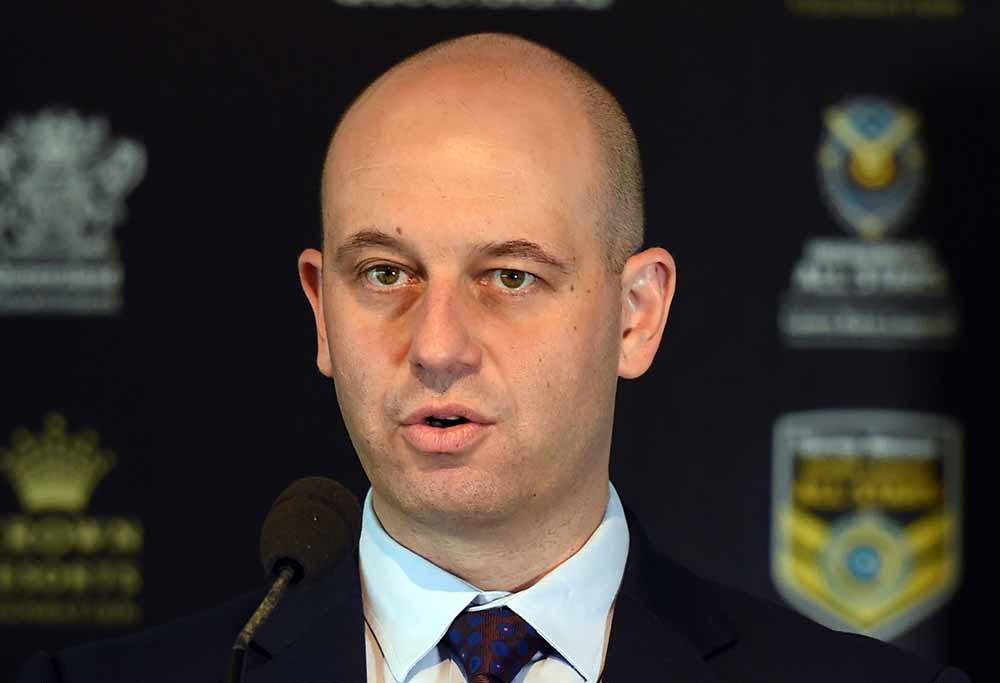
The NRL must be wary of TV rights values diminishing. (AAP Image/Dan Peled)
9) On-field specialisation is a trend that arguably affects other sports but is included here because of the dramatic nature of the changes and a discernible evolution towards an assembly-line approach to teamwork.
The sport as played now would be unrecognisable to anyone who played in 1895/96, when it was dour but in a different way.
Coach Brian Smith once complained that not even halves these days were capable of organising attack across the entire width of the field and no longer tried to do so.
Professionalism brought an incentive to entertain on the part of administrators and a disincentive to do so on the part of coaches and captains – and that war has been raging ever since.
10) Despite the ravages of all the forces listed above, rugby league survives as a thriving community made up overwhelmingly of those who have no ambition or hope of making money from it.
Its greatest victory is arguably that hundreds of thousands of kids, parents, officials, referees and others show up each Saturday morning on fields dotted around the globe despite the sport being either invisible or maligned in popular culture during the previous seven days.
What has kept them coming back for 123 years? The reasons can be identified as tangible benefits to the physical and mental wellbeing of children, geographic tribalism and the wider sense of community one derives from involvement in a sporting club.
This attraction survives, despite everything that has happened since and the many failures and near misses of those at the front of the good ship rugby league, since a chilly Saturday, September 7, 1895, when the whole thing kicked off.





























































































